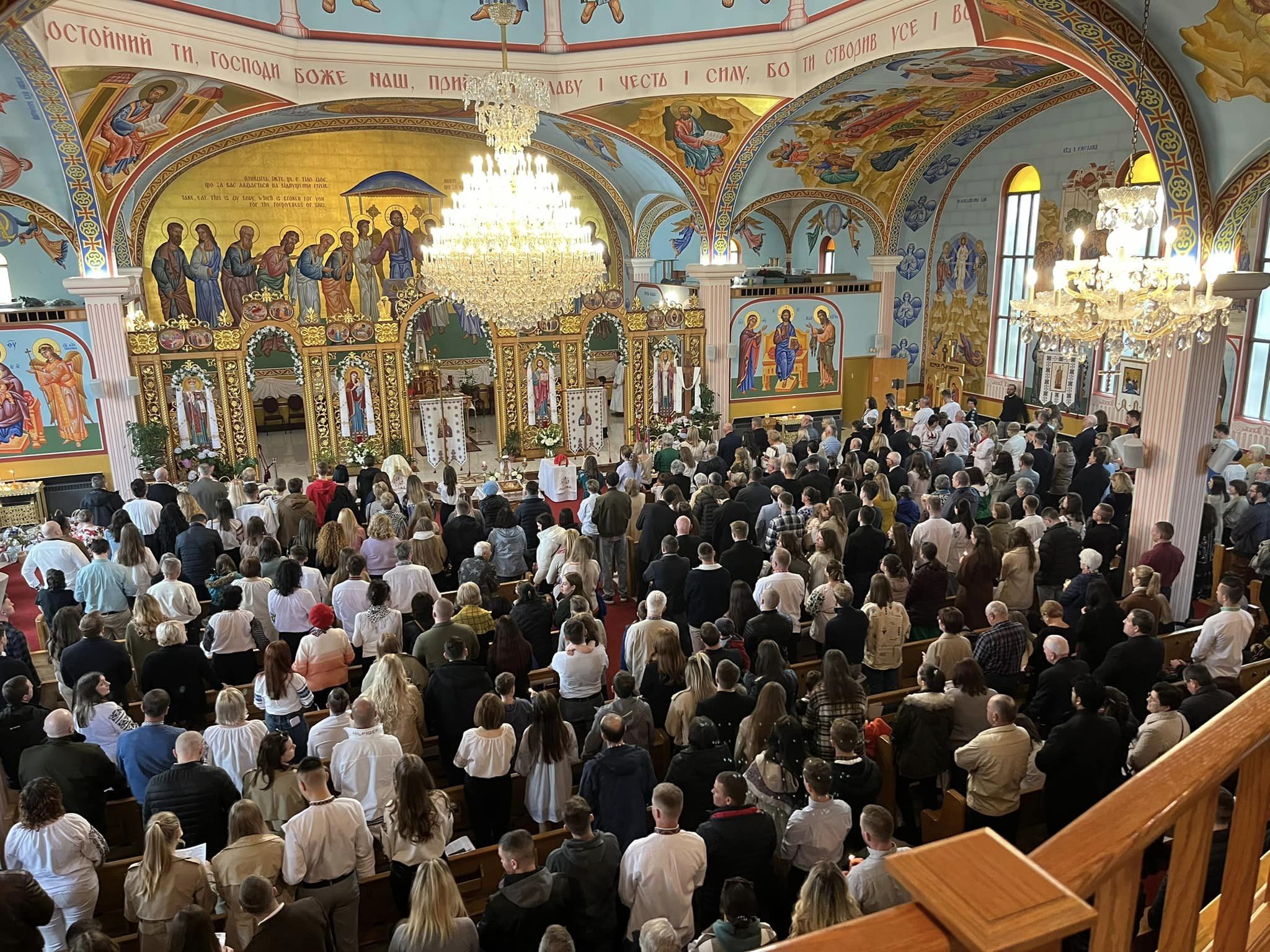by Brent Kostyniuk
“Wow!”
That was the reaction of a friend of mine when she first stepped into a Ukrainian Catholic church. Although a life-long Catholic, and, indeed, a religion teacher in our city’s Catholic school system, this was her first encounter with the Byzantine tradition. She had not yet heeded St. John Paul II’s admonition that the Church should breathe through Both Lungs – East and West. Moreover, he proclaimed it was the duty of Catholics of the West, that is Roman Catholics, to learn about their Eastern brethren.
“It’s so big inside!”
Her eyes were drawn upwards to the dome which surmounted the nave. There, looking down, was the almost overwhelming icon of Christ Pantocrator. From the Old Testament we learn that God is the “Lord of Hosts” (Psalm 46:7) and “God Almighty.” (Psalm 84:8) Pantocrator – ruler of all – is a Greek word which expressed this notion. However, the icon does not show Christ with a crown or sceptre, symbols of earthly rule. His is a heavenly kingdom. From His vantage point, the Pantocrator stares down, with His eyes fully open. He appears to be looking directly into the soul of the viewer. The Pantocrator icon remind us that “God is with us.”

The icon portrays Christ as both a Righteous Judge and the Lover of Mankind – a phrase repeated in the Divine Liturgy. Christ’s right hand is formed into a blessing,
His fingers are depicted in a pose that represents the letters IC, X and C, thereby making the Christogram, ICXC (for Jesus Christ). The Christogram typically uses Latin characters to represent the Greek characters iota (Ι) and sigma (Σ) – the first and last letters of Jesus in Greek (Ἰησοῦς), while chi (Χ) and sigma (Σ) are the first and last letters of Christ in Greek (Χριστός). The blessing proclaims God’s loving kindness toward us, showing us that He is giving us His forgiveness. This same gesture is used by priests when blessing the faithful during the Divine Liturgy.
In His left hand, Christ holds the book of Gospels, that by which we are all judged. If the Gospel book is open, the icon is known as Christ the Teacher. One priest remarked the icon also meant Christ might “throw the book at us,” when our judgment time came!
“Where is the altar?”
In a Byzantine church, the nave is separated from the sanctuary by an iconostasis,a wall of icons, that is, images. The role of the iconostasis may be understood by considering the layout of the great Temple in Jerusalem. The innermost portion was the resting place of the Ark of the Covenant. Known as the Holy of Holies, which only the High Priest could enter, this area was separated from the second larger part of the building by the Veil of the Temple. Our Ukrainian Catholic churches maintain this religious and architectural tradition with the sanctuary and altar separated from the nave by the iconostasis. It is in this sacred space that the Divine Liturgy is celebrated. The central feature of the iconostasis are the Royal Doors, which are opened for the Liturgy.
“Is there no organ?”
The Divine Liturgy was about to start, and choir began a hymn. There was no organ, no piano, not even a simple guitar. In the Byzantine tradition, musical instruments are not used. It is believed the human voice is the only instrument worthy of praising the Lord. Moreover, a beloved sadochok [kindergarten] teacher was fond of saying, “When you sing, you pray twice.”
“Can I receive Holy Communion?”
Although it may come as a surprise to some Catholics, the Ukrainian Greek Catholic Church is in full communion with the universal Catholic Church. Even though our theology, spirituality, and liturgical traditions different, our priesthood and sacraments are all validly Catholic.
The Byzantine experience is an integral part of our lives as Ukrainian Catholics. Along with other Eastern Catholic churches, we follow this ancient tradition which developed around Byzantium, later Constantinople, and today Istanbul. It shades the way we pray, the way we approach the Lord, and the way we celebrate being Christian. It is a vital part of the reason St. John Paul II said the Church breathes through both lungs – East and West.

